Today, we're going to learn Jimmy Herring’s first solo from Mississippi Half-Step Uptown Toodeloo, from the AMAZING Jazz is Dead record, Laughing Water.
- In this lesson, you’re going to learn how to play this solo, which i’ve broken down into four licks.
- We’ll talk about how to play these licks, and why they sound so good.
- The theme of this lesson is how to incorporate arpeggios into your playing, just like Jimmy expertly does in this solo.
- We’re specifically going to go over the seven different arpeggio shapes that he uses here, and how you can use them in your own playing.
We’ll also discuss two major takeaways –
- the first one details a different (and easier) way to look at every dominant 7 chord you’ll ever see in your entire life.
- the second involves advice to solve the biggest mistake that I see beginners make when they try to incorporate arpeggios in their improvisation.
So grab your guitar, and lets dive in!
Original Title Photo Credit: Grateful Web
Gear Used for This Video
Performance:
- Custom 50th Anniversary Tiger Guitar by Lieber Guitars
- Two Rock Studio Pro Plus 35W Combo Amplifier w/
- Pickboy Pos-a-Grip Jazz Classic Tortoise Shell Cellulose 1.50mm Picks
- Planet Waves Custom Series Right Angle Guitar Cable
Recording:
- AKG D8000M Dynamic Vocal Microphone (vocal mic)
Jimmy Herring's Jazz Is Dead Mississippi Half Step Solo Analyzed Note-for-Note
Lick 1

- For this lick, Jimmy starts by outlining the chord tones of A minor, by approaching them by a half step below.
- Let’s look at the chord tones of A minor in the E shape, also known as a minor Barre Chord.
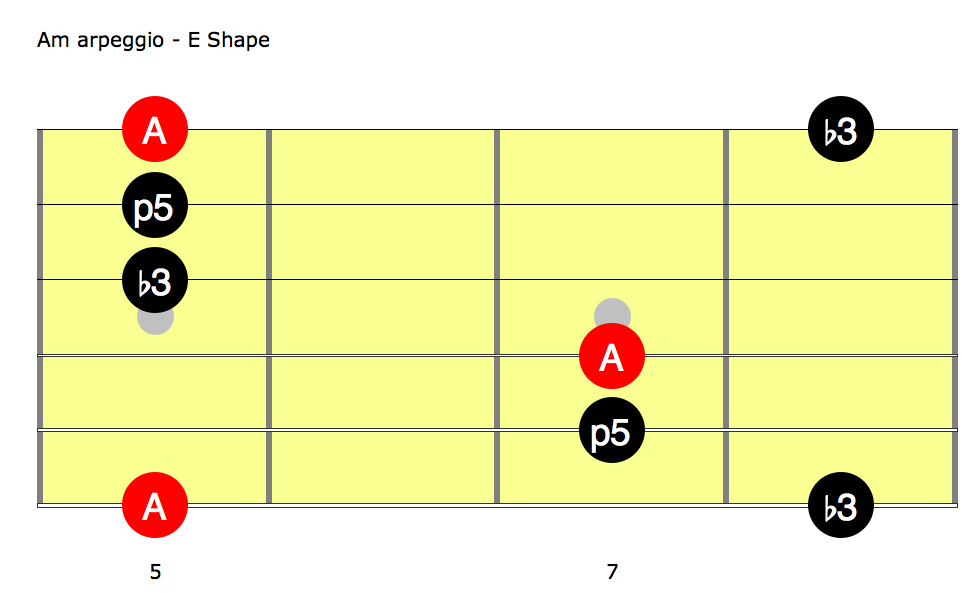

- So we can see that Jimmy is outlining the harmony, but just adding a half step below each chord tone.
- Over Am7, he targets the 9th, which adds some tension. He then resolves to the G note (8th fret B string), which is the b7th of Am7. Let’s look at the chord tones of Am7 in this part of the neck, which is also our E shape.
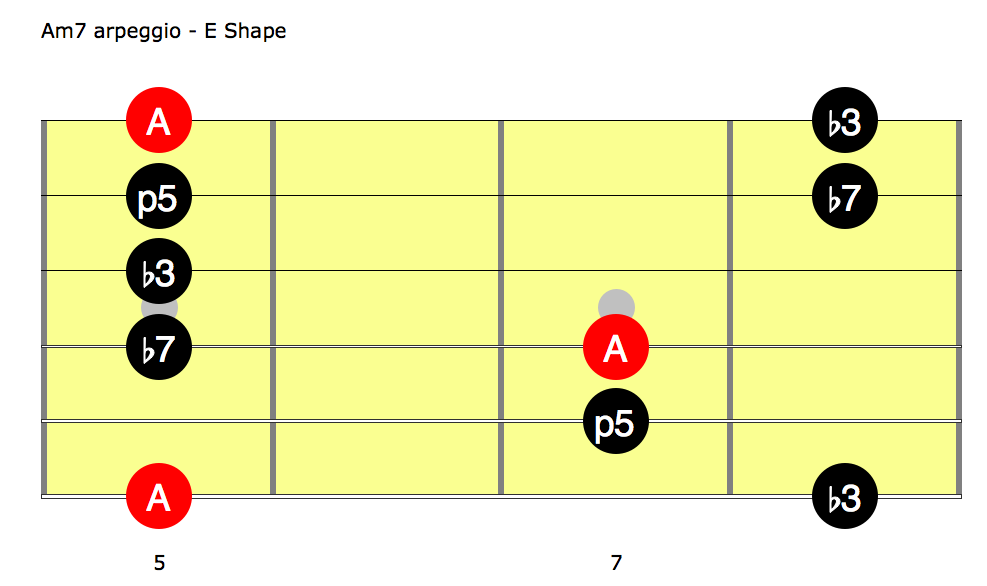

- So, he targets the b7th of Am7 and connects it to the 3rd of D7, which is the F# note, 7th fret B string.
- Let’s look at the chord tones of D7 in this part of the neck, which is the A shape.
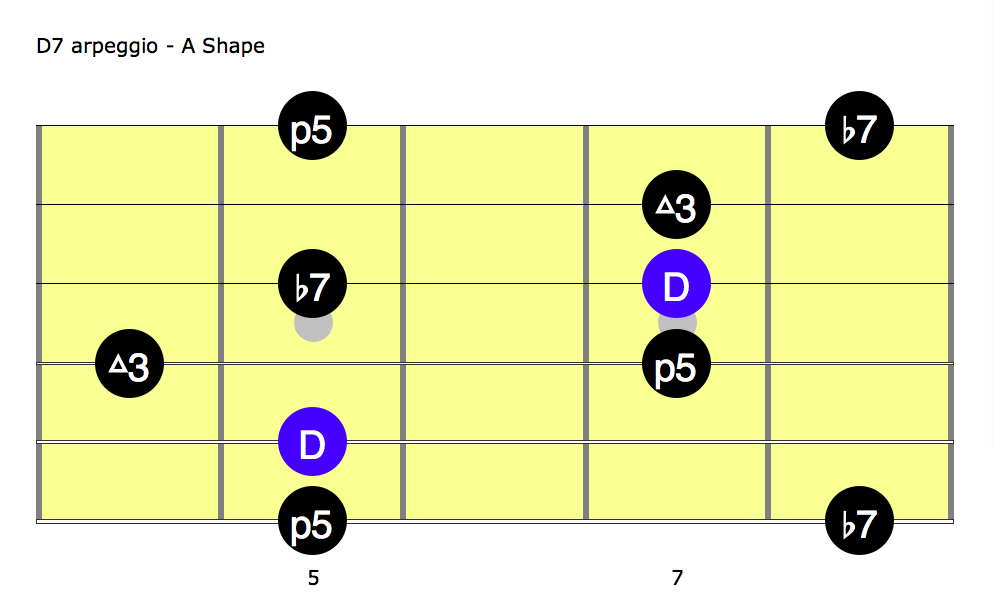

- So all of these notes are right out of this arpeggio. Over the D7 chord, he also plays notes right out of the Am7 arpeggio. Check that out.
- This is a very common approach, and brings us to our first takeaway.
Lick 2

- For the beginning of this lick, Jimmy plays pretty much right up the C shape of the F major Arpeggio. Let’s check that out.


- We can see that he targets the third from a half step below (i’m guessing you see a theme here)
So after that, he plays the D minor arpeggio right out of the box, with no alterations, or embellishments, in the G shape. It’s just a plain old D minor arpeggio. And it sounds especially great, because the rhythm.
- Let’s look at this lick, which takes its notes right out of the D minor in the G Shape.
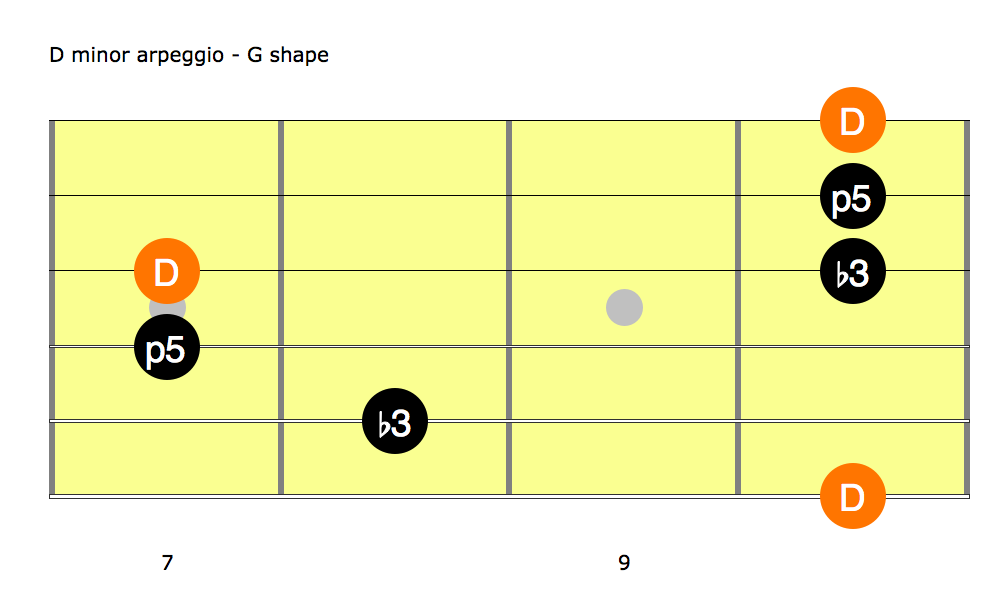

- The next part of this, he plays yet again, another arpeggio. This time its the B7 arpeggio out of the E shape.


- So all of these notes are right out of this shape.
- Now what makes this lick extra melodic, is that he connects the 5th of B7(the F# note, 7th fret B string) to the 3rd of E7 (the G# note, 9th fret B string)
- Let’s look at these notes of the E7 arpeggio, which is in the A shape.


- All of these notes, again, right out of the A shape of E7.
- To end the lick, he plays the b3rd and root of A minor.
Lick 3

- To start off lick 3, Jimmy uses a similar approach over the Am chord as he did with lick 1.
- He just plays the arpeggio up and down, but he plays a half step below each chord tone.
- He also targets the 9th a bit, which is why this sounds so good.
- Over the Am7, he actually plays the A minor blues scale, but he bends to the notes rather than plucking them straight out.

- At the end, he connects the 7th of Am7 (the G note, 8th fret B string) to the 3rd of D7 (the F# note, 7th fret B string). This is a very common approach in all styles of music, particularly jazz.
Lick 4

- Jimmy starts off with an F arpeggio in the C shape. We talked about this in lick # 2.
- After that he goes right down the Am arpeggio in the E shape.
- To top it off, Jimmy does a couple classic country licks based on 6ths.
- I like to think of a sixth as a third that was flipped down an octave
- Over the D7 chord, he plays the root, and chromatically connects the 9th to the 3rd of D.
- Let’s harmonize these 3rds. Now lets flip the 3rds down an octave, and you get this lick!
- Over the G7 chord, he plays the same thing, but just transposed to the key of G.
Putting It All Together
Youtube has a great feature that allows you to slow down the speed of videos without changing the pitch.
At the time of filming this lesson, this speed feature is currently available on the desktop browser version Youtube only. If you’re watching this on mobile device such as a smartphone or a tablet, you’ll need to switch to an actual desktop or laptop for this one.
- So your homework is to scroll to the beginning of this video and then click the gear symbol and then 50% speed button and play along to the solo.
- Once you can play the whole solo at half speed without any mistakes, you should move on to 75% speed and play along to it again.
- Once you can play it at 75% speed, try it at full speed.
Some of you may find this solo challenging, but I promise that you can learn how to play it if you follow these steps!

If you haven't already, check out my 30 page e-book on building tension and release with the pentatonic scale. It's free.
Thank you for allowing me to be your groove sherpa for today.
Feel free to reach out to me if you have any questions or comments. I read every e-mail.
Below is the 1-page PDF of this solo. If you'd like a copy sent to you, enter your name & email in the box below the TAB.
Want the PDF of this solo sent to your inbox?
Enter your name & email address and I'll send you a copy in less than 30 seconds







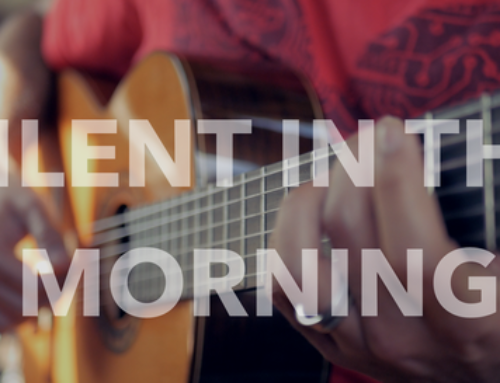
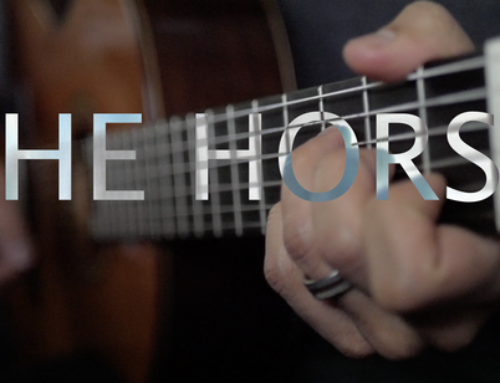

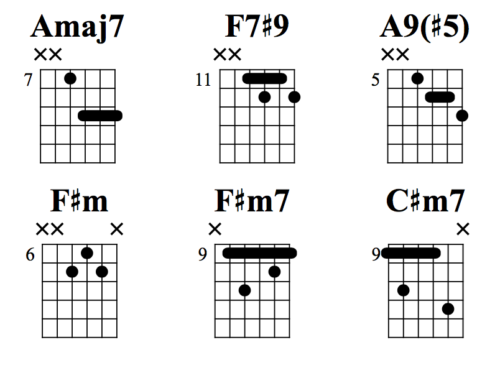

Leave A Comment